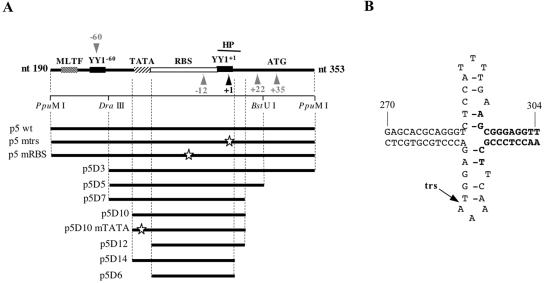FIG. 2.
(A) Presentation of the wild-type and mutated p5 elements. The arrowheads indicate the position of the Rep68 nicking sites (black: major cleavage site at trs+1; gray: other minor trs sites). The putative hairpin (HP) structure overlapping trs+1 is represented by a thick black line. White stars show the positions of the point mutations that were introduced within the p5 sequence (37). (B) Putative hairpin secondary structure present at the p5 transcription initiation site (trs+1). Bold nucleotides indicate the deletion of the hairpin structure present in mutants p5D14 and p5D6.

